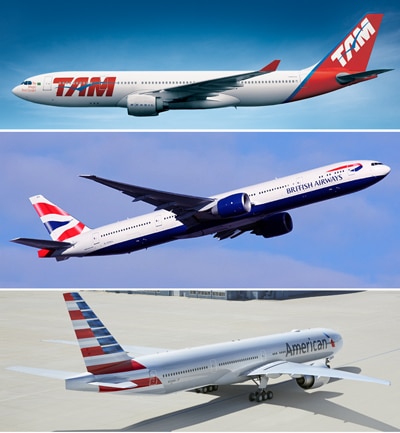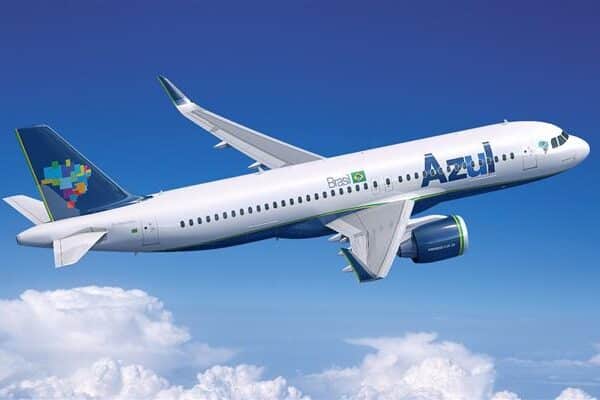New York: People are opting air travel as the most convenient way of travelling from one place to another, increase air travel is a great factor influencing the development of advanced aircraft oxygen system. According to a report of IATA, around 7.8 billion passengers are expected to adopt air travel by 2036. This has paved a pathway for aircraft oxygen system manufacturer to introduce new products in the market. It is reported that in the coming year production of aircraft oxygen system is going to increase. Moreover, in order to cope up with the cabin pressure in aircraft it is recommended by the ICAO to use supplementary oxygen to avoid hypoxia which has fueled the sale of aircraft oxygen systems.
New aircrafts with OEM’s are engaged in integrating advance features, this has encouraged incorporation of smart aircraft oxygen system that includes sensor and for detecting oxygen. For instance, the OBOGS produces oxygen and carries out filtration, oxygen gas monitoring and quality control in aircraft. Introducing novel technologies in the aircraft oxygen system by manufacturer to achieve sustenance in the competitive environment. It is likely that sales of aircraft oxygen system are affected depending on the type and model of aircraft and its technology compatibility, which will also influence the growth of Aircraft oxygen system.
What is Aircraft Oxygen System?
Aircrafts fly high and in low air pressure due to which atmospheric air is undesirable in aircraft cabin, hence internal system are used to generate the condition sand atmosphere similar to surface, to give the breathing support on high altitude. So, to support and maintain appropriate pressure in cabin these systems are used and such systems are known as Aircraft oxygen system, it is installed in every aircraft, it also controls humidity, air pressure, oxygen amount and temperature. Other than this there is an emergency oxygen system which is also a part of aircraft oxygen system and deployed whenever the primary system fails or shut down.
Aircraft Oxygen System market: Dynamics
Air travel is growing steadily from past couple of years because of its affordability, conveyance and, time saving offers to the passengers. Growing disposable income among the working-class population and migration of the same from rural to urban areas has increased the demand for air travelling and is anticipated to continue in the future. The two major names in the commercial aircraft world have predicted that the demand for new passenger aircrafts is expected to grow by more than hundred percent owing to the rate at which passenger count has increased. Reports published by IATA (International Air Transport Association) suggest that passenger growth has averaged around 2% on yearly basis touching 3.8 billion passengers in the 2016 alone, prompting the airline carriers to order new aircrafts in large number. This changing trend is the key factor in establishing a positive growth for the aircraft oxygen system market.
Regulation and policies formed by various airline associations mandate regular maintenance and replacement of worn out aircraft parts. This has led to a positive growth in aircraft MRO ((Maintenance, Repair and Overhaul) services wherein aircrafts are refurbished regularly in order to stock aircrafts with latest parts and systems. A growing trend within the airline industry is that airline carriers that are among the top players regularly lease their older aircraft fleet to smaller airline carriers. This helps the top players the generate investment to order and purchase newer aircrafts.
It is a well-known fact the aircraft manufacture requires huge amount of investment, planning, lead time among others. Such factors tend to create undelivered backlogs whenever large number of orders are placed by various airline carriers. This can act as a restraint to the growth of aircraft oxygen system market leading to delayed deliveries of the system and payments as well. Lack of well-knit supply chain of the system is another factor acting as a roadblock to the growth of the market.
Aircraft Oxygen System Market: Segmentation
The Aircraft Oxygen System market can be segmented as follows:
By technology, the market can be segmented as:
Chemically Induced System
Compressed Oxygen System
By sales channel, the market can be segmented as:
Original Equipment Manufacturers (OEM) Aftermarket
By application, the market can be segmented as:
Passenger seating area
Cabin crew area
Others
By aircraft type, the market can be segmented as:
Narrow body aircraft
Wide body aircraft
Very large body aircraft
Regional aircraft
Aircraft Oxygen System Market: Regional Outlook
The market performance of aircraft oxygen system depends upon the production numbers of an aircraft. The two largest players involved in commercial aircraft production are based in North America and Europe region while some smaller players have their bases in Canada, Brazil and France. Collectively it can be said that the aircraft oxygen system market is expected to generate high sales return in North America, Europe and Latin America owing to the presence of large-scale manufacturers forming the OEM segment of the market as well as strong performance in the aftermarket segment as well. However, the performance in other regions including Japan, Asia Pacific and Middle East & Africa is expected to solely depend on how frequently the systems are replaced on an existing aircraft fleet through MRO (Maintenance, Repair and Overhaul) hence generating revenue largely from the aftermarket segment.
AircraftOxygen System Market: Market Participants
Below are some of the players in the global Aircraft Oxygen System market, identified within the value chain:
Rockwell Collins, Inc.
Zodiac Aerospace ADR
Cobham plc
Technodinamika, JSC
Precise Flight, Inc.
Diehl Stiftung & Co. KG
Aviation Oxygen Systems Inc.
Essex Industries, Inc.
East/West Industries, Inc.
Adams Rite Aerospace Inc.
This press release was orginally distributed by SBWire




